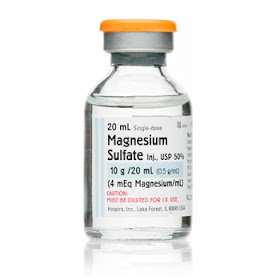The endoscopy images below were from a young gelding that presented for a history of coughing while eating. In addition, an intermittent nasal discharge was present and the gelding was described as a "hard keeper". In Figure 1, a small amount of feed material was noted along the floor of the soft palate, just in front of the epiglottis. In addition, feed particles were noted on the epiglottis and the walls of the pharynx. These findings alone are not 100% indicative of a dysphagic (difficulty swallowing) horse however, generally speaking there should NOT be any feed material in the pharynx or larynx.
 |
| Figure 1 |
When the endoscope was passed through the larynx into the trachea (wind pipe) copious amounts of feed material mixed with mucus was noted on the walls of the trachea. In Figure 2, green and brown feed material can be seen adhered to the wall of the trachea. As the endoscope was pass further down the trachea, feed material mixed with mucus remained present in significant amounts.
 |
| Figure 2 |
At the very end or deepest region of this image (Figure 3) is the primary bifurcation of the trachea which occurs just in front of the heart. The presence of feed material at this level of the airway is consistent with aspiration and a trans-tracheal wash was performed to confirm pneumonia.
 |
Figure 3
|
Dysphagia and aspiration pneumonia are quite uncommon in horses and may be secondary to a neuropathy affecting the nerves that control the swallow reflex. The most common disease processes in horses that may affect these nerves include equine protozoal myeloencephalitis (EPM), cervical spine trauma, trauma to the guttural pouches, temporohyoid osteopathy (THO), strangles, encephalitis, and basisphenoid bone fracture. Unfortunately, the prognosis is poor for horses with this condition. The likelihood that they will recover their normal swallow reflex, regardless of the cause, is low! In addition, the aspiration pneumonia that results from the dysphagia is a recurring problem that typically results in their failure to thrive!












